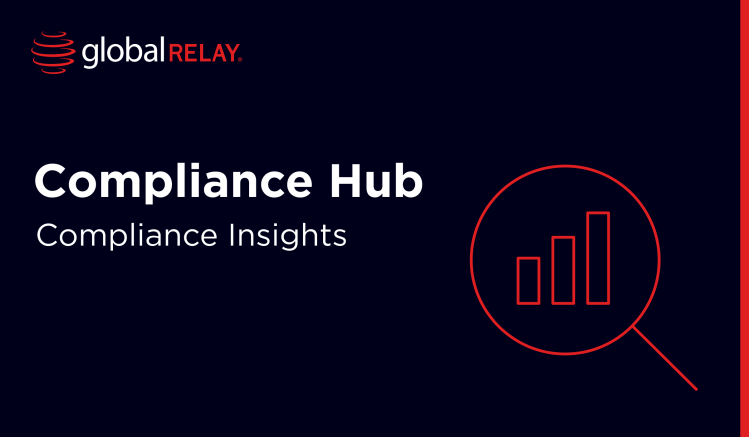
AI compliance solutions: The future of regulatory success
As regulatory requirements grow increasingly demanding, artificial intelligence compliance solutions are becoming essential tools for organizations seeking to navigate today's challenging environment with greater accuracy and efficiency.
Written by a human
In brief:
- AI-powered regulatory tools are transforming how organizations detect risks and manage compliance across multiple communication channels
- Machine learning compliance systems can process vast datasets in real-time, identifying potential violations before they become costly problems
- Automated regulatory solutions significantly reduce human error while ensuring continuous audit readiness and enhanced reporting capabilities
The regulatory challenge today
Organizations face an unprecedented burden when it comes to maintaining compliance across diverse regulatory frameworks. The volume of data requiring analysis has exploded, with companies now managing communications across email, instant messaging, video calls, and collaborative platforms like Microsoft Teams. Meanwhile, regulations such as SEC guidelines, GDPR, and MiFID II continue to evolve, creating moving targets for compliance teams.
Traditional approaches to regulatory oversight simply can’t keep pace with this growth. Manual review processes are time-consuming, expensive, and prone to human error. Companies often find themselves playing catch-up, discovering compliance issues only after they’ve already occurred. This reactive approach not only increases regulatory risk but also drives up operational costs and can damage an organization’s reputation.
The challenge becomes even more pronounced when considering the variety of communication formats teams must monitor. From structured emails to informal chat messages, each channel presents unique risks and requires specialized analysis techniques. Without proper AI communication surveillance capabilities, organizations struggle to maintain consistent oversight across all these touch points.
How AI transforms compliance
AI for regulatory compliance represents a fundamental shift from reactive to proactive risk management and is one of the biggest advances in compliance history. Here are some of the most important ways that AI is powering compliance in today’s business environment:
Natural language processing
Natural language processing technology, one of AI’s many capabilities, can analyze thousands of communications simultaneously, identifying potentially problematic language patterns, sentiment changes, and behavioral anomalies that human reviewers might miss.
Machine learning algorithms
Another application of AI perfectly suited to compliance are machine learning algorithms, which excel at pattern recognition and learn from historical compliance data to identify emerging risks before they escalate. These systems can flag suspicious trading communications, detect potential market manipulation attempts, and identify conflicts of interest across vast datasets. Unlike traditional rule-based systems, AI-driven compliance software adapts and improves over time, becoming more accurate as it processes additional data.
Real-time compliance monitoring
Real-time compliance monitoring represents another significant advancement. Rather than discovering issues during quarterly reviews, AI governance platforms can alert compliance teams to potential violations as they occur. This immediate feedback loop allows organizations to address problems quickly, often before any regulatory harm occurs.
Automation
Automation also streamlines audit preparation processes. AI eDiscovery tools can rapidly compile relevant documentation, create audit trails, and generate comprehensive reports that demonstrate ongoing compliance efforts to regulatory bodies.
Benefits of AI-powered compliance solutions
The advantages of implementing artificial intelligence compliance systems extend far beyond simple automation. Organizations that implement AI-powered compliance solutions typically experience several key benefits:
- Enhanced scalability: AI systems can process exponentially larger datasets than human teams, making them ideal for organizations experiencing rapid growth or managing multiple business units across different jurisdictions.
- Improved accuracy: Machine learning models reduce false positives and negatives by learning from historical patterns and continuously refining their detection capabilities.
- Cost reduction: Compliance automation software significantly reduces the labor hours required for routine monitoring tasks, allowing human experts to focus on strategic initiatives and complex investigations.
- Seamless integration: Modern AI compliance solutions can integrate directly with existing communication platforms, ensuring comprehensive coverage without disrupting established workflows.
- Proactive risk management: Rather than discovering issues after the event, AI risk detection systems identify potential problems early, enabling preventive action.
- Audit readiness: Automated documentation and reporting features ensure organizations maintain comprehensive records and can quickly respond to regulatory inquiries.
However, implementing these solutions also presents certain challenges that organizations must address, including:
- Data quality requirements: AI systems require clean, well-structured data to function effectively, which requires initial investments in data management infrastructure.
- Change management: Staff must adapt to new workflows and learn to work alongside AI tools, requiring training and cultural adjustment.
- Regulatory acceptance: Organizations must ensure their AI compliance solutions meet regulatory standards and can withstand scrutiny from oversight bodies.
Choosing the right AI compliance partner
When evaluating AI compliance solutions, organizations should prioritize several critical factors. Robust AI algorithms form the foundation of effective compliance systems, but technical capabilities alone aren’t sufficient.
The ideal AI compliance partner combines advanced technology with deep regulatory expertise, understanding both the technical requirements and the regulatory nuances of your specific industry.
Data security standards represent another non-negotiable requirement when assessing compliance vendors. Given the sensitive nature of compliance data, any AI governance platform must demonstrate the highest levels of cybersecurity and data protection. Look for solutions that offer end-to-end encryption, secure cloud infrastructure, and comprehensive audit trails.
Integration capabilities also deserve careful consideration. The most powerful AI-powered regulatory tools are those that work seamlessly within your existing technology ecosystem, requiring minimal disruption to current processes while maximizing the value of your existing data assets.
Finally, consider the vendor’s track record and commitment to ongoing innovation. The regulatory environment continues to evolve rapidly, and your compliance automation software must be able to adapt accordingly. Vendors that invest heavily in research and development, maintain strong relationships with regulatory bodies, and demonstrate thought leadership in AI compliance trends are more likely to provide long-term value.
Final thoughts
AI compliance solutions are fundamentally reshaping how organizations approach regulatory challenges, making compliance processes smarter, more efficient, and increasingly proactive. As regulatory requirements continue to grow in scope and sophistication, the organizations that embrace these advanced technologies will find themselves better positioned to maintain compliance while reducing operational costs and regulatory risks.
The transformation is already underway, with leading companies leveraging machine learning compliance systems, AI communication surveillance, and automated regulatory solutions to gain competitive advantages in their respective markets. Those still relying on traditional approaches risk falling behind both in terms of compliance effectiveness and operational efficiency.
For organizations ready to explore the potential of AI-driven compliance, the time to act is now. The technology has matured to the point where implementation risks are minimal while the potential benefits are substantial. By choosing the right AI compliance partner and taking a strategic approach to implementation, companies can transform their compliance operations from cost centers into competitive advantages.
